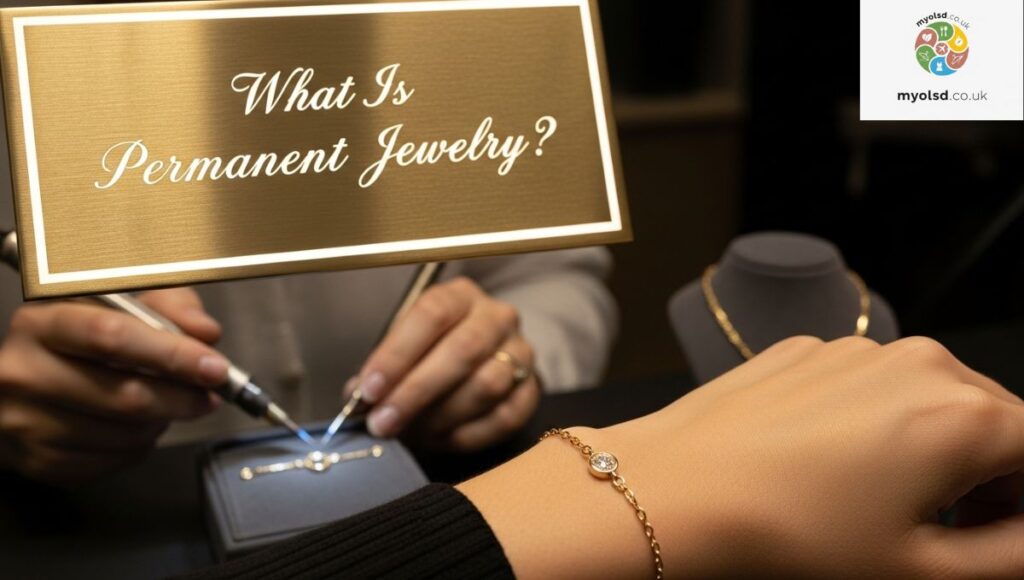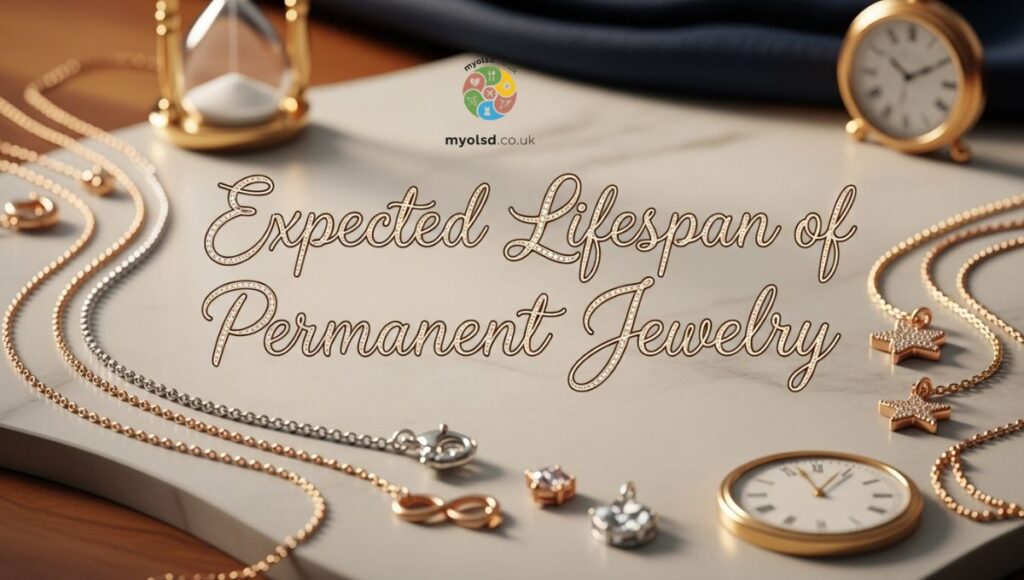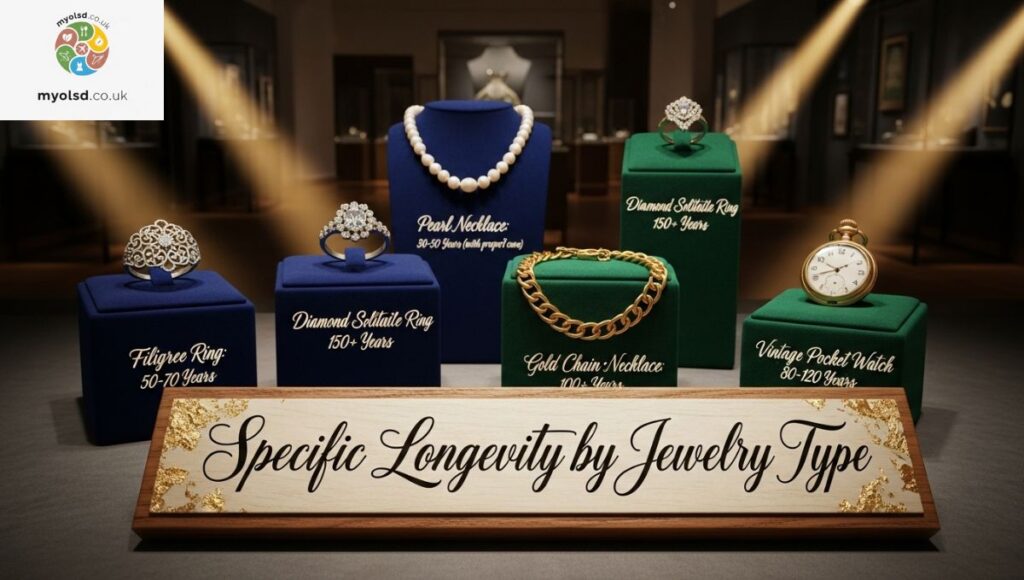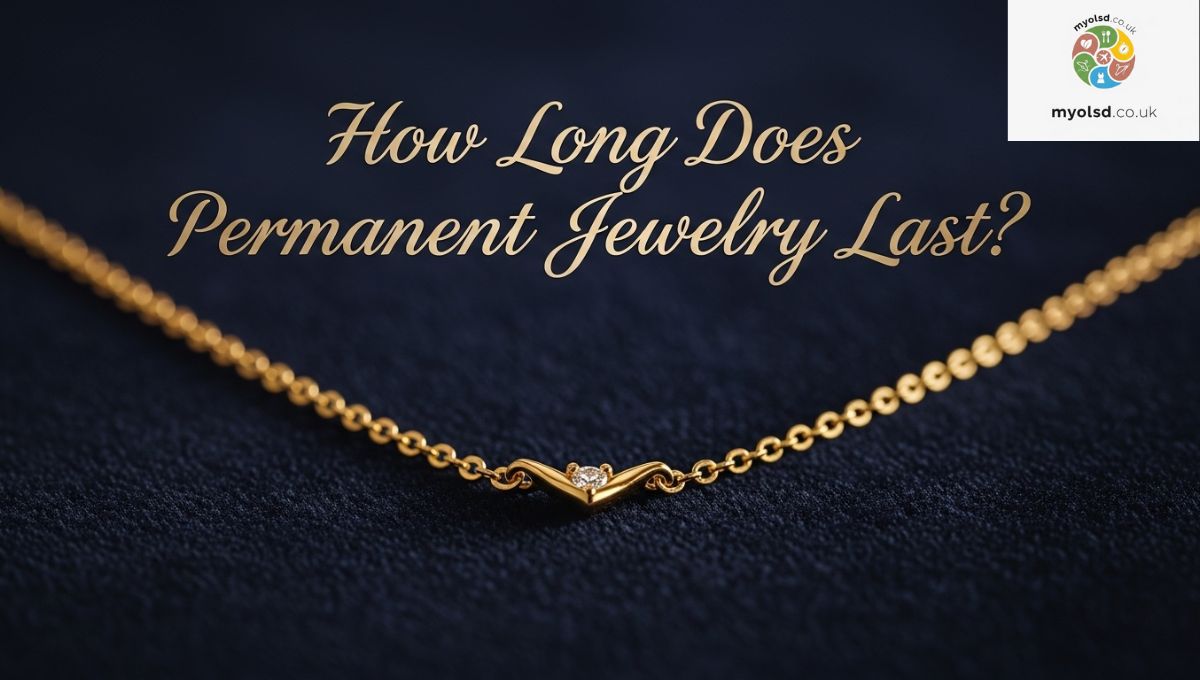Have you ever bought a piece of permanent jewelry and found yourself wondering, How long does permanent jewelry last? It’s kind of nerve-wracking to invest in something meant to stay on forever, only to worry if it will lose its shine, break, or even need constant fixing. You just want a beautiful bracelet, anklet, or necklace that lasts without all the stress.
In this blog, we’ll break down everything you need to know about the lifespan of permanent jewelry. From the materials used to simple care tips, you’ll get clear, practical insights to make your piece last for years or even a lifetime. By the end, you’ll feel confident about wearing your permanent jewelry worry-free.
What Is Permanent Jewelry?

Permanent jewelry, sometimes called welded or bonded jewelry, is meant to remain on your body indefinitely. Unlike traditional bracelets or necklaces that have clasps, the ends of permanent pieces are fused using a precise welding process by a skilled jewelry artist. This seamless design creates a unique accessory that can be worn every day without worrying about it getting lost.
Permanent jewelry is available in various forms, including bracelets, anklets, necklaces, and rings. These pieces are typically made from durable metals like 14k gold, 14k gold-filled, sterling silver, and platinum. Many people choose permanent jewelry not only for style but also as a symbol of commitment, friendship, or milestone events. Since it’s intended to last, understanding its durability and proper care is essential.
Factors Influencing the Longevity of Permanent Jewelry
Several factors determine the lifespan of your permanent jewelry. Here are the key factors:
1. Material Quality
The type of metal used plays a huge role in durability. Solid gold and platinum are resistant to rust, corrosion, and tarnishing, while sterling silver can last decades with proper care. Gold-fill is slightly less durable than solid gold but still offers long-lasting wear. Lower-quality metals may fade or weaken faster, especially if exposed to harsh chemicals.
Read more Article:How Long Does Well Water Last?
2. Daily Wear & Lifestyle

Even durable metals can be affected by lifestyle factors. Swimming in chlorinated pools, frequent workouts, contact sports, or exposure to chemicals like bleach or tanning lotions can gradually stress the metal. Chains that are lighter in weight are more prone to breaking, whereas thicker chains tend to be stronger and more durable.
3. Environmental Factors
Humidity, saltwater, and even skincare products can impact the shine and integrity of your jewelry over time. While high-quality metals resist tarnish, routine maintenance will help ensure longevity.
Expected Lifespan of Permanent Jewelry

So, how long does permanent jewelry last? The answer depends on metal choice, care, and lifestyle:
- Solid Gold & Platinum: Can last a lifetime, often decades, with minimal maintenance.
- Gold-Fill & Sterling Silver: Typically last 5 to 20 years, depending on exposure to stressors.
- Everyday Wear: Bracelets or anklets worn daily may show minor wear but still maintain durability for years.
- Occasional Wear: Pieces worn only on special occasions can last even longer.
By understanding these factors and incorporating simple care routines, you can maximize your jewelry’s lifespan and keep it looking elegant for years.
Maintenance and Care Tips for Permanent Jewelry
Regular care is essential to keep your permanent jewelry lasting for the longest time. Here’s how to care for it:
1. Regular Cleaning
Use warm, soapy water and a soft toothbrush or cloth to clean your jewelry. Avoid harsh chemicals that can cause tarnishing, especially with sterling silver. Polishing cloths designed for jewelry are ideal for restoring shine.
2. Protect From Physical Stress
Be mindful of activities that could tug or snag your jewelry, such as sports, heavy lifting, or gardening. Lighter-weight chains are especially vulnerable, so consider removing jewelry if necessary or using protective gear.
3. Avoid Chemical Exposure
Chlorine, bleach, and other strong chemicals can degrade metals over time. Always rinse your jewelry after swimming in pools or exposure to the ocean.
4. Professional Check-Ups
Annual inspections by a professional jeweler can help detect worn links or minor damage before it becomes a bigger problem. If a chain breaks, skilled jewelers can re-weld it to restore its integrity.
Specific Longevity by Jewelry Type

Different types of permanent jewelry may last differently depending on design and wear:
- Bracelets: made from high-quality chains, when properly cared for, can endure for decades. Thinner bracelets may require extra caution.
- Anklets: Constant movement and friction from shoes or socks can slightly reduce longevity, but durable metals handle it well.
- Necklaces: Typically less stressed than bracelets or anklets, they can maintain shine and structure for years.
- Rings: Daily hand activity may increase wear, but solid metals like platinum or gold perform exceptionally well.
Choosing the right metal and chain type based on your lifestyle is crucial to maximizing durability.
Signs Your Permanent Jewelry Needs Attention
Even the most durable jewelry requires occasional care. Watch for these signs:
- Tarnishing or Discoloration: Indicates exposure to chemicals or natural wear.
- Worn or Thinning Links: May lead to breakage if not addressed promptly.
- Loss of Shine: Regular polishing can restore brilliance.
Dealing with these problems promptly helps lengthen the life of your permanent jewelry.
Professional Installation & Safety Considerations

Permanent jewelry requires precise installation by a trained jewelry artist. The process involves measuring wrist or ankle circumference, selecting the chain, and welding the ends together. Safety precautions include using eye protection, safety patches, and proper welding equipment.
If you ever need to remove permanent jewelry temporarily for an MRI, X-ray, or CAT scan, skilled jewelers can safely cut and re-weld the piece. Airport security is usually not an issue, but always check with TSA if your chain is bulky.
Conclusion
Permanent jewelry is an elegant, enduring investment, whether it’s a bracelet, anklet, necklace, or ring. With metals like solid gold, platinum, and sterling silver, combined with proper care and mindful daily wear, these pieces can last a lifetime.
By understanding the factors that influence durability, including material choice, lifestyle, and maintenance, you can enjoy your permanent jewelry for years to come. Remember to clean regularly, avoid harsh chemicals, and schedule professional check-ups when needed. With these simple steps, your permanent jewelry can truly become a lifelong companion, sparkling and strong through all of life’s adventures.
FAQS
How long will permanent jewelry last?
With proper care, permanent jewelry can last decades, and some pieces may even last a lifetime.
What are the downsides of permanent jewelry?
Permanent jewelry can be difficult to remove, may require professional care, and is vulnerable to breakage or tarnish if not properly maintained.
Can I shower with permanent jewelry?
Yes, the majority of permanent jewelry is waterproof, though contact with harsh chemicals like chlorine should be limited.
Can permanent jewelry be worn in an MRI?
No, permanent jewelry should be removed before an MRI to avoid safety risks.

